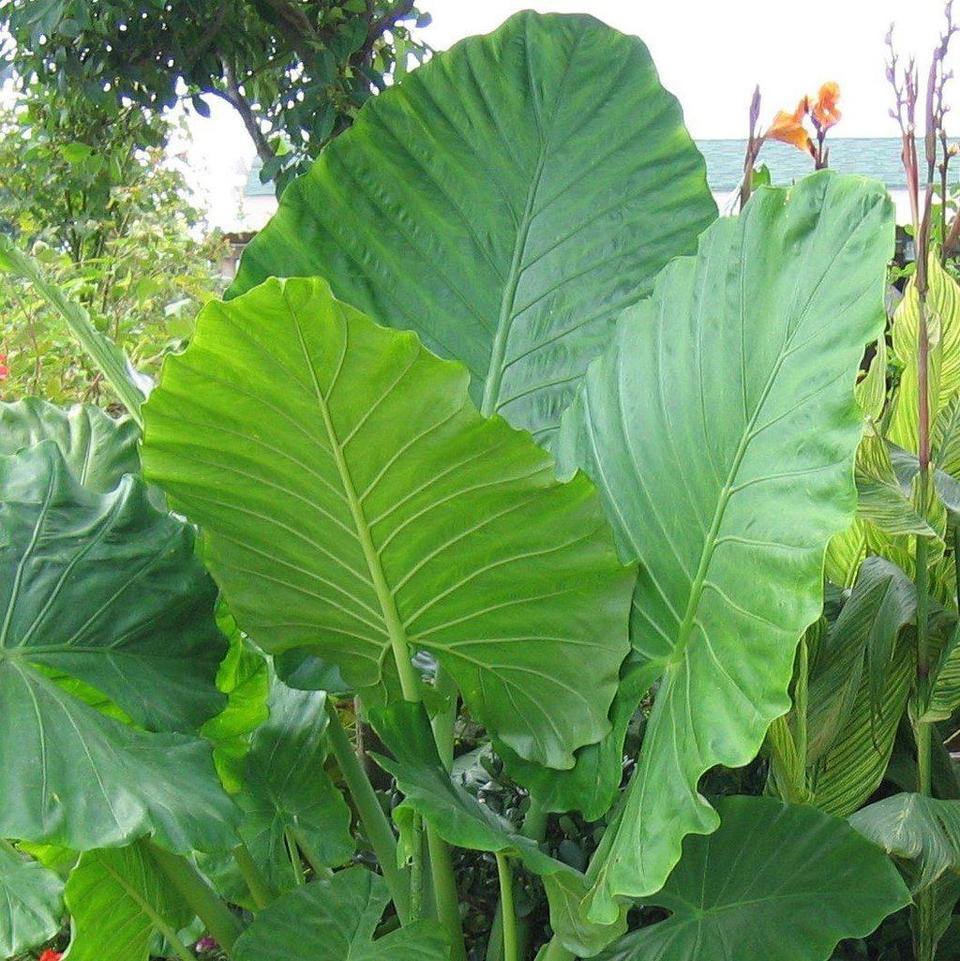Gift Card Balance
Enter the code below to redeem your gift card

Have you ever been to a tropical island and loved the lushness of your surroundings and wanted to pack it up and bring it back with you? No room in your suitcase? You bought too many souvenirs? No worries, we'll just mail them to you!
We want to take the mystery out of planting them if you've never done this before and give you some ideas of where to use Elephant Ears in your own garden space! We can see these bulbs being planted around a pool area with a trickling waterfall or bubbling fountain. The leaves of this plant are so graceful as they gently fan you sitting in your lounge chair by the pool. At Lively Root, we offer lots of fun, gorgeous bulbs that you will love; we mean L O V E!
Drum roll, please! Introducing the gigantic Upright Giant Jurassic Elephant ears or Alocasias. The bulbs are whoppers and vary from 13-17+ inches in circumference. Their growth height can extend to 6 feet tall and wide, making them a brilliant screening plant in the summertime—the bigger the bulb circumference, the more foliage on display. And if your kids want a Jurassic Park theme park in their backyard, these are the ones to get to recreate the set!
Now the difference between these and the Colocasia or Mammoth Elephant Ears is how the leaf is displayed. The Uprights face upward, and Colocasia’s face more downward, more like a caladium leaf does. Both are fantastic; it would just be a personal preference or taste for your garden. Or, if you love them both, team them up with the caladiums in a pot around the pool or patio. You'll love the way the breeze catches them in a graceful sway.
The Mammoth Elephant Ear bulbs are slightly smaller but still give a monumental impact. They are between 5-13 inches. These bulbs are the size of a baseball at 5-7" size. Plant 2 feet apart and the 11-13 inch bulbs 4 feet apart since they grow to a nice width.

It is sometimes challenging to conclude which end of an elephant ear bulb is the top or bottom. When examining the Colocasia bulb, one end is slightly gnarly with small divots. This end is the root end and goes downward in the soil.

The opposite end of the bulb will be much smoother, with distinguished concentric rings around it. The sprout will emerge so that this end will be facing up.
On the Alocasia, which is much bigger, you can’t miss where the old leaves were and the roots begin. Of course, set it sitting up like this (shown in the picture).

When you dig the hole, mix in some compost with the native soil (if you have compact soil) and some bulb fertilizer. Mix it all well in a bucket together—center the bulb in the middle of the hole and then water. Yes, water before you put the soil back in.

Plant the alocasia bulb in the ground with 50% showing above the soil surface about 3-4 feet apart. Just don't let your four-legged dinosaurs (dogs in disguise) dig them up!

For the Colocasia, you'll want to plant it 1 inch below the soil surface, about 3-4 feet apart. Thoroughly soak the area with water one more time once you plant the bulbs. If you need to add more soil after it settles, do so.
Now patience is a virtue, and you will have to exercise yours. It takes approximately 3-8 weeks for the sprouts to appear, depending on the soil's warmth and sunny days.

After these sprouts, you can start planning that pool party! Dress up the dogs in dinosaur costumes and turn on the Jurassic Park music score!
Continue to water regularly throughout the growing season, and don't let them dry out. Fertilize plants once per month with a 3-1-2 water-soluble fertilizer while actively growing.
Now, we can't wait to see what you're doing in your garden with these. Bring out the dinosaurs and send us pictures hanging out in your own Jurassic Park screen set on Instagram, TikTok, and Facebook with the hashtag #livelyroot. If you have any questions about your plant, email us at support@LivelyRoot.com
Written by: Debbie Neese